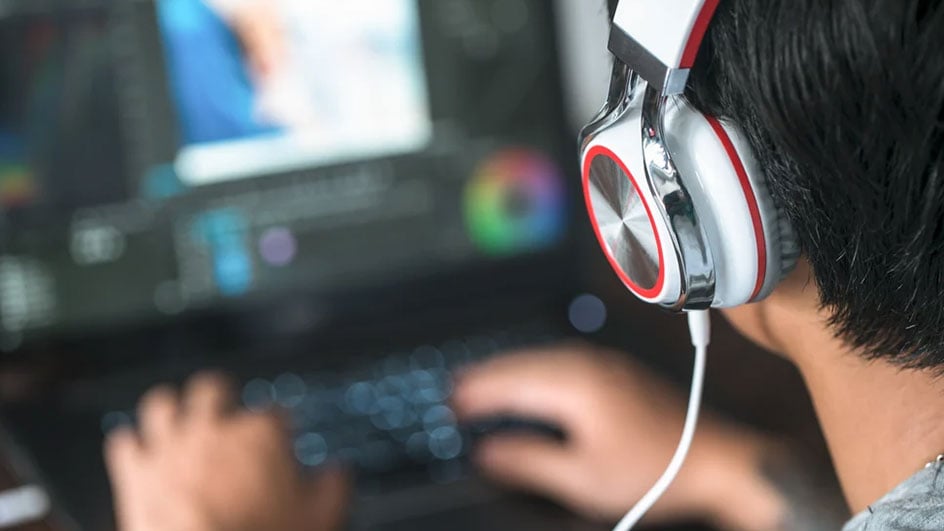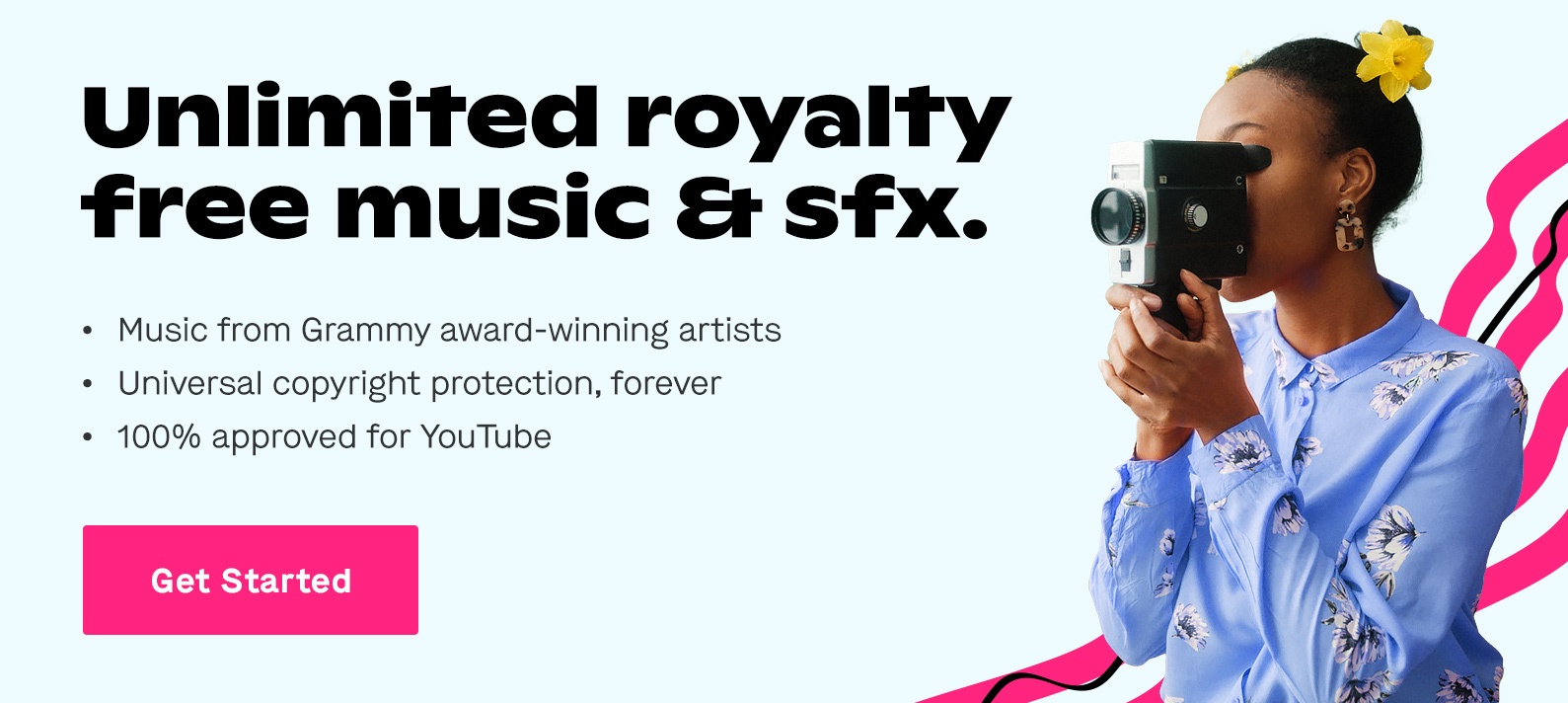
Jul 2, 2019
Copyright laws can be confusing, and it doesn’t help that there is a lot of misinformation out there regarding copyright and fair use practices. At its core, “copyright” just means “the right to copy” and refers to the creator or author’s right to copy and reproduce an original work, or any portion of it.
In this guide, we’ll go through some of the basics of copyright and “fair use” laws, with a focus on using copyrighted music for nonprofit and other instances. We'll also look to answer the question, "can you use copyrighted music for non-profit videos?"
As a note, copyright laws do vary from country to country and in certain circumstances, so always make sure you check your local laws before you add music or use any part of any work that you know (or think) is copyrighted.
Nonprofit Doesn’t Mean It’s Automatically Fair Use
There is definitely some confusion and misinformation floating around when it comes to using copyrighted music for nonprofit applications.
You’ve probably heard it before: The typical interpretation is that since a nonprofit isn’t ultimately making any profit from the final video or project that uses the copyrighted material, you’re automatically protected under “fair use” copyright laws.
But that’s not how copyright law works. The biggest misconception is that nonprofits are somehow protected from copyright infringement due to their non-profit status.
Copyright and fair use laws apply to all uses of copyrighted work, even using copyrighted music for nonprofit, regardless of your entity’s non- or for-profit status.
Additionally, “fair use” is never clearly defined — on purpose. By design, fair use law is meant to encourage free expression for both the copyright holder and for works or other content that comments on the original.
Without fair use laws, there wouldn’t be any parody or satire. Both are important political and social tools artists can use to raise awareness about injustices or other issues.
But “fair use” doesn’t blanket apply to nonprofits. The original creator, as the copyright holder, has the ability to bring lawsuits up against anyone who uses any portion of their work. It’s up to the courts to then decide if the copied work or portion of copied work actually infringes on the copyright.
Nonprofit Educational Purposes
One place where copyright law clearly mentions nonprofit uses of copyrighted work is in relation to educational purposes.
Keep in mind, this is not a loophole for a company to claim that a video or other reproduction of copyrighted materials was intended for educational purposes. It’s not a get out of jail free card.
This part of the fair use law specifically applies to nonprofit educational institutions such as libraries and archives. When it comes to the most common cases of using copyrighted music for nonprofit, the educational clause doesn’t apply.
Tips to Avoid Headaches When Using Copyrighted Music for Nonprofits
In many cases, using part of a copyrighted work and providing attribution is enough to stay in line with copyright laws.
Using small portions of copyrighted work or copyrighted music for nonprofit and for profit scenarios is typically deemed legal, falling under the fair use doctrine. But it’s important to seek legal counsel if you go this route.
Tip: Even if the portion of music or other copyrighted material is insignificant in your view, one way to avoid getting into trouble is to obtain permission from the original creator. With the copyright holder’s written or otherwise formal consent, you would be allowed to use the predetermined portion of the original in your project without worrying about a lawsuit.
Different content producers, jurisdictions, and judges have various standards for what qualifies as copyright infringement.
In fair use cases, the law must consider (1) the nature of the copyrighted work and (2) the amount and “substantiality of the portion” used in relation to the copyrighted work as a whole.
Chron’s Small Business section cites an example by Brad Templeton from an article titled, “10 Big Myths About Copyright Explained” wherein a magazine used 300 words from President Ford’s memoir.
Even though the 300-word section was not a quantitatively significant portion of the original work’s 200,000 words, courts deemed the article was in violation of copyright law on a qualitative basis.
The 300-word portion used explained, in Ford’s own words, why he pardoned President Richard Nixon. In the court’s view, this qualified as a substantial portion of the original work and was therefore deemed copyright infringement.
Tip: Another way to ensure that you don’t run into any copyright issues when using copyrighted music for nonprofit is to choose work that the original creator specifically licenses for re-use. More on that below.
One more tip: Additionally, using someone’s original work can be a good way for the music or other content to get additional exposure. When asking for permission, always offer to credit the original author or creator and explain the impact and market value the exposure could provide.
Use Licensed Music
Using copyrighted music for nonprofit video or other publication can get you into trouble, especially if you don’t go about it the right way. (This is especially true when trying to illegally use royalty free music without acquiring a royalty free license from the copyright owner — regardless if it's just background music.)
Trying to use nonprofit status to get out of a copyright lawsuit is a long and complicated process. While there are cases where copyrighted original material can be used in certain instances, the fact that your company has nonprofit status is not an automatic out.
Hands down, the easiest way to avoid having to deal with a copyright lawsuit when using copyrighted music for nonprofit is to use music that has specifically been licensed for re-use.
Rather than taking a chance and possibly going to court just because you found a good track you want to use, the best way to find video music for nonprofits is always going to be by obtaining and using music specifically licensed for that purpose.
Tips for Royalty Free Music and Commercial Use
There's a lot to learn about what constitutes royalty free music vs public domain music. I would highly recommend reading up on this article on royalty free music and how you can use unlimited music for commercial use or YouTube videos on your YouTube channel.
The key is remember that even with nonprofit videos, you need to do your research into who is the copyright holder or copyright owner, as well as if your "public domain music" is liable of any copyright infringement.
In short, always look into getting permission to use (even when just working with background music or without commercial gain). Believe us, encounters with record companies and the copyright act without permission from the copyright holder are no fun.
How Soundstripe Can Help Find Quality Copyrighted Music
Finding good video music for nonprofits, or even finding good music for any video projects, can be a real challenge. Adding in the complication of worrying about copyrights and it’s enough to make you give up.
At Soundstripe we’ve curated the best tracks when using copyrighted music for nonprofits. We believe in supporting up-and-coming artists and our main goal is always to “keep creatives creating.”
When you choose one of our tracks for your nonprofit video project, you’re getting some of the best original music available, in addition to providing exposure for new artists — it’s copyrighted music licensing for nonprofits made easy.
Further reading
For more tips for video producers looking to find copyright infringement-free and royalty free music, be sure to read up on these royalty free music resources below so you won't have to worry about any copyrighted material, licensing fees, or having to pay royalties on a case by case basis in the future.
